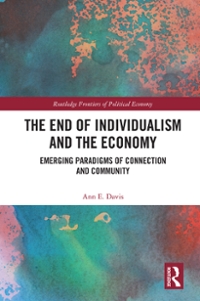Answered step by step
Verified Expert Solution
Question
1 Approved Answer
QUESTION 1 Which of the following is not protected activity of employees under Section 8 of the NLRA? A.The right to engage in concerted activities
QUESTION 1
- Which of the following is not protected activity of employees under Section 8 of the NLRA?
- A.The right to engage in concerted activities for mutual aid and protection.
- B.The right to vote in a union election without fear of coercion.
- C.The right to refuse to bargain with an employer over wages, hours, and working conditions.
- D.The right to strike.
QUESTION 2
- Under the Norris-LaGuardia Act of 1932, courts were explicitly prohibited from interfering with peaceful union activities, yellow dog contracts became unenforceable, and the conspiracy doctrine was effectively overturned.
- True
- False
QUESTION 3
- Property rights of an employer include the right to do business, to hire and fire employees, and to interact with customers.
- True
- False
QUESTION 4
- The Wagner Act of 1935 is grounded in which of the following principle beliefs regarding conflict?
- A.Conflict between management and labor is unnatural and should be avoided at all costs.
- B.Collective bargaining should be necessary only in extreme cases of employer abuse.
- C.Conflict between management and labor is inevitable and collective bargaining between equal partners is the preferred method for resolving disputes.
- D.Conflict between management and labor is inevitable because of class and social differences.
QUESTION 5
- In response to illegal or unethical behaviors of local union officials, the Landrum-Griffin Act of 1959 allows:
- A.Union members to immediately decertify the union.
- B.The NLRB to run an immediate election of new union officials.
- C.National unions to take over and replace elected local officials with an appointed trustee.
- D.Employers to step in on behalf of their workers and take over the union.
QUESTION 6
- According to the Wagner Act (NLRA), if two employees walk off the job and proceed to picket their employer's place of business to protest unsafe working conditions, the employer is not allowed to retaliate against them (e.g., fire them).
- True
- False
QUESTION 7
- The Clayton Act of 1914 was significant because:
- A.It outlawed all activities of unions, including organizing, picketing and striking.
- B.It is the first legislation to give labor unions the right to exist.
- C.It was effective in protecting unions' rights to picket and strike.
- D.It explicitly exempts labor unions from the Sherman Antitrust Act of 1890.
QUESTION 8
- The Taft-Hartley Act (Labor Management Relations Act) of 1947 did all of the following except:
- A.Gave states the right to pass right-to-work laws.
- B.Required unions to bargain in good faith with management.
- C.Outlawed the use of secondary boycotts.
- D.Prohibited employers from expressing their views and opinions on unionization.
QUESTION 9
- What legislation created a national minimum wage, mandatory overtime premium for qualified workers, and restrictions on child labor?
- A.Equal Pay Act.
- B.Civil Rights Act.
- C.Employee Retirement Income Security Act.
- D.Fair Labor Standards Act.
QUESTION 10
- NLRB v. Jones and Laughlin Steel Corporation (1937) is a notable labor relations case because:
- A.It declared the National Industrial Recovery Act to be unconstitutional.
- B.It upheld the constitutionality of the National Labor Relations Act.
- C.It meant that employers could no longer use injunctions to stop unionization attempts.
- D.It established a test to determine whether an employer had violated the NLRA.
QUESTION 11
- During the early 1900's, unions were viewed by the law as voluntary organizations of individuals and, since U.S. law valued individual liberty and freedom above all else, unions and workers were allowed relative freedom to use whatever means they could to protect their wages and working conditions.
- True
- False
QUESTION 12
- If a union worker does not want her union dues to be spent on political activity, she:
- A.May resign her membership in the union or pay only that portion of dues that is used for representation activities (i.e., pay a reduced fee).
- B.Has no choice - the union can spend her dues payment however it wants.
- C.May file a claim against the union charging misuse of union funds.
- D.Can refuse to pay dues but remain a member of the union as long as she has paid the initiation fee.
QUESTION 13
- Recent changes to the Wisconsin public sector bargaining laws have:
- A.Prohibited collective bargaining over anything except base wages.
- B.Decreased the bargaining rights of workers in the private sector.
- C.Expanded the workers who are eligible to bargain collectively.
- D.Increased the number of issues over which union workers may bargain.
QUESTION 14
- TheWrightLinetest is a standard of proof used to determine:
- A.Whether an employee has violated an employer's policies.
- B.Whether an employer's discipline and termination process has been applied consistently.
- C.Whether an employer has unlawfully retaliated against an employee for union activity.
- D.Whether race or gender discrimination has occurred.
Step by Step Solution
There are 3 Steps involved in it
Step: 1

Get Instant Access to Expert-Tailored Solutions
See step-by-step solutions with expert insights and AI powered tools for academic success
Step: 2

Step: 3

Ace Your Homework with AI
Get the answers you need in no time with our AI-driven, step-by-step assistance
Get Started


